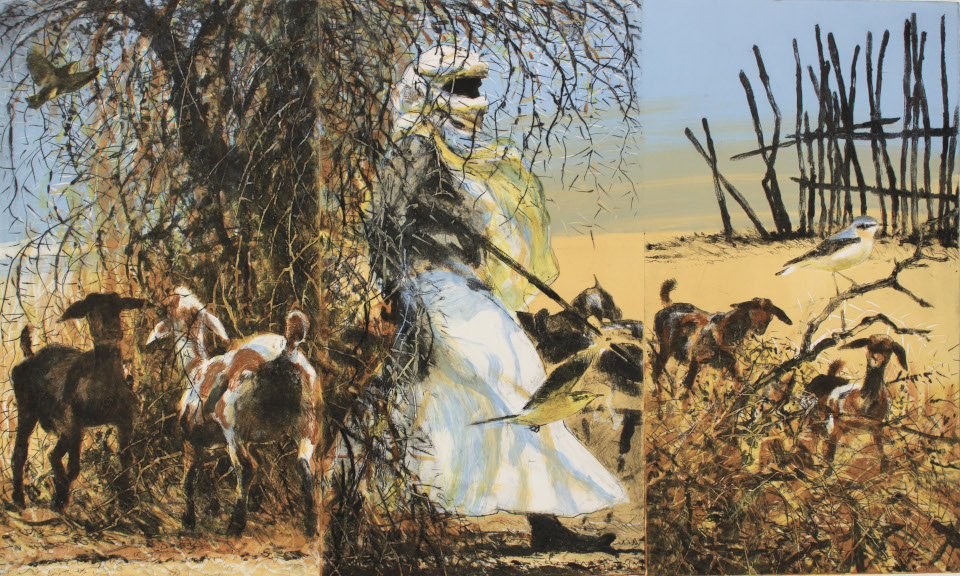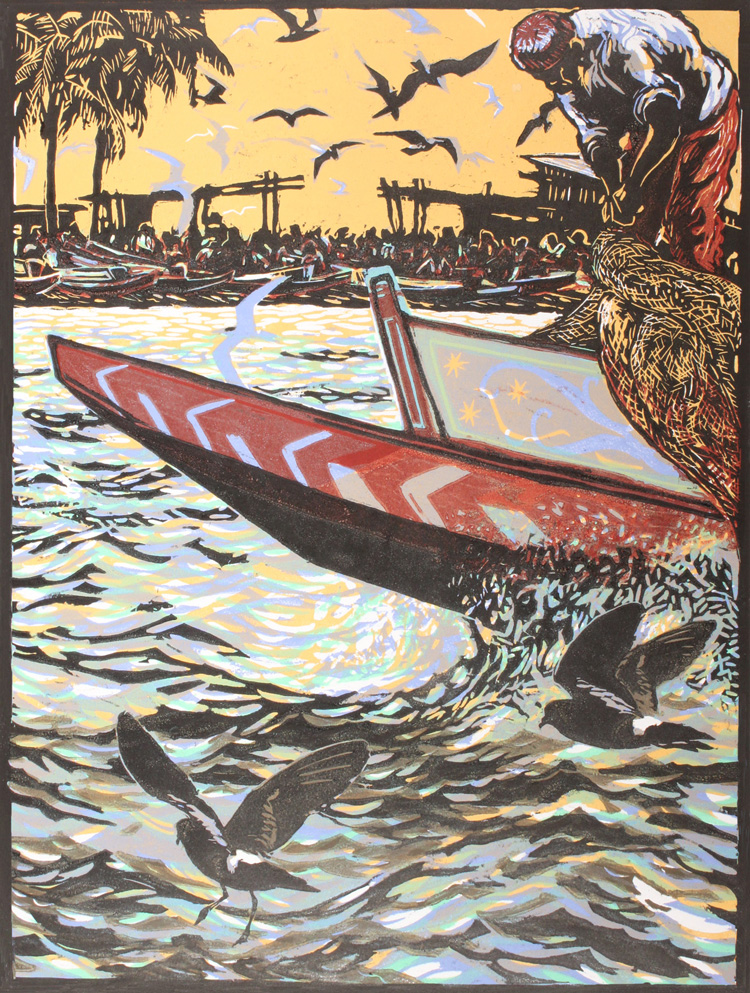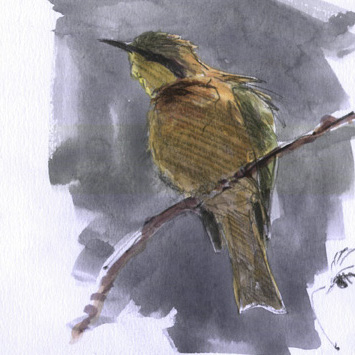BTO / SWLA Project
Senegal, 17- 31st January 2014
| There wasn’t a huge amount of time in advance of being notified of my selection to fill one of the four places on the field trip to Senegal, so a lengthy briefing wasn’t possible. Instead, myself and the other three artists (Greg Poole, Esther Tyson and Bob Greenhalf) were in fairly regular email contact with Dr Phil Atkinson, head of the BTO's International Team. He was to lead the expedition and brief us in advance about what to expect and what the BTO wanted from the project. (Left) Sahel Shoreline, relief print 42cm x 76cm |
That was the powerful formal briefing, but each of us was also sent a copy of Say Goodbye to the Cuckoo by Michael McCarthy, his 2009 book on the marvels of bird migration and his personal experiences of migrant birds and birders. A great read - and a very spirited and emotional response to one of the enduring wonders of the natural world. And finally, over 25 years ago I had travelled to Senegal and then through West and North Africa on my own journey following migrant birds – so, by mid-January I felt fully briefed and ready to go. For the detail of the days in the field and journeying between key habitats, I will let the drawing speak for themselves. Hopefully, some of them will be included in the ’out of the frame’ space at the exhibition this year. The highlights? Dozens of European storm petrels streaming over the water a few metres offshore from a seething mass of boats and people gathered as the day’s catch was traded in the evening light - everything shrouded in columns of familiar terns from Europe and local species all stirred together by marauding pomarine skuas. Every thorn bush in the sahel sheltering a phylloscopus warbler and local prinia or weaver, while scattered on the ground in the harsh sunlight beneath them cream-coloured and Temminck’s coursers, chestnut-bellied sandgrouse and northern wheatears. A very dark grey Montagu’s harrier chased by the brilliant flashes of turquoise, chestnut and ultramarine of an Abyssinian roller. Of course, there was so much else as well; and I tried to fix as much as possible in the sketches and larger field paintings. Now the second, but equally exciting phase - developing paintings and prints in the studio trying to tease out some of the more significant ideas. Eventually, I hope my portfolio will convey something of the colour, species and vegetation juxtapositions, intensity of light, harshness of the rural and agricultural environment, the beauty and abundance of life in the marshes and flood – simply, a spirited and emotional response to one of the enduring wonders of the natural world. |
(Above) Little bee-eater The little bee-eater occupies has a large range across Africa south of the Sahara. It mainly occupies the grassy savanna and wetland edges tending to perch quite low to the ground to dart out and hunt flying insects. Often they return to the same small twig to devour prey or watch out again for another insect flying by.
|
 Sahel, Sahel. Intaglio print
Sahel, Sahel. Intaglio print
© Bruce Pearson 2025. All rights reserved

